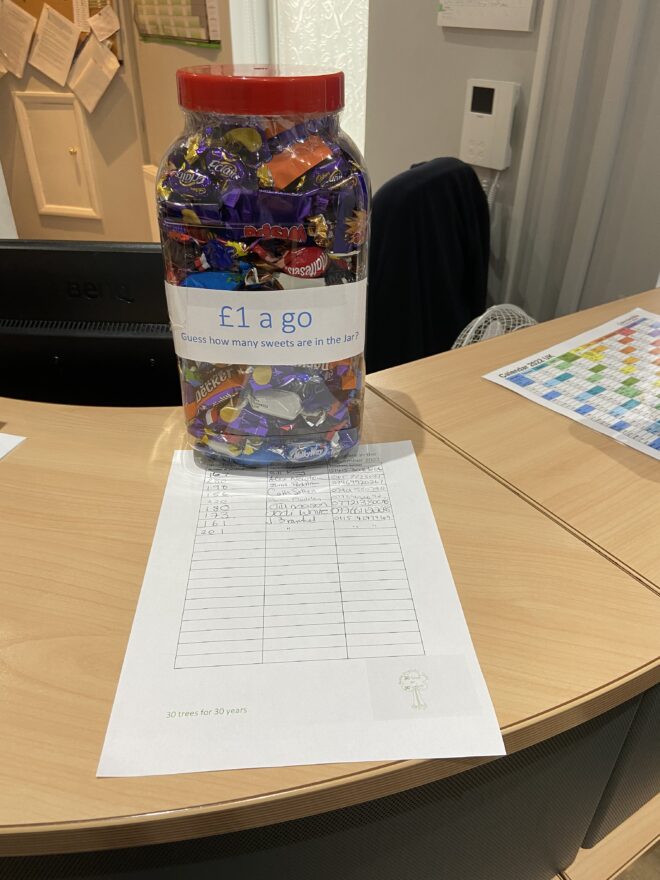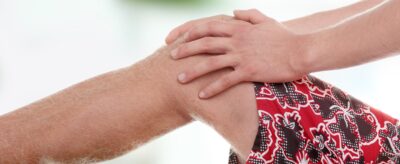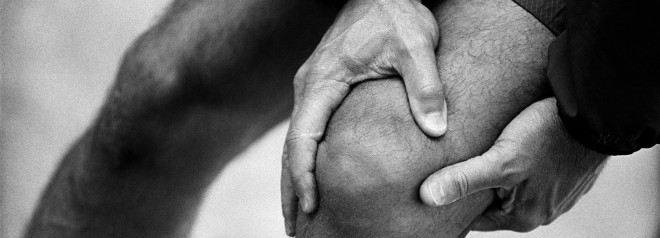
Clinic news
Please help! Final call for your secret recipes - sweet or savoury, a picture too if possible - please send them to reception@beestonchiropractic.co.uk asap - Matt needs to start editing and get ready for the publication of our lovely Christmas book.
The clinic secured sponsorship from the Home Office for Erin's visa and she is now on track for her to start work in early November. Alex is counting the days as it has been a long hard slog getting the team back up to full capacity. From 1st November 2022, we will be resuming the pre-covid clinic opening times which means 08:00hrs starts every day and closing at 20:00 hrs Monday, Tuesday and Thursday. Wednesdays and Fridays a 17:00hr close and Saturday 12:00hr. To check out YOUR chiropractor's clinic times visit the website: http://www.beestonchiropractic.co.uk/people/ or check the notice boards in the clinic. Don't forget to book your appointments you can visit the Janeapp for scheduling even when we are closed.
As some of the swimmers kick into their last 10 miles, Alex will be joining Sue Lacey at Bramcote leisure centre to join her in that 100th mile. There are many other patients and their families still pursuing the challenge - it is a remarkable achievement and we wish them well in their final strokes. We are gaining ground on our fundraising for the trees. More events are unfolding now.
Luke has picked up the challenge and committed to a 100-mile bike ride before 30th March 2023 - please sponsor him - every penny counts - the sponsorship form is on reception.
To get your sweet tooth tingling why not guess how many sweets are in the jar - the winner will be drawn just before Christmas so you can share them with friends and family over the holiday period. It's £1 a go and all donations will go towards our trees.
Look out around the clinic for the dates for our craft tables we are kicking off on 7th November with our ever-popular bring-and-buy cake stall again so grab your favourites before they are gobbled up. Other dates are now available for the craft stalls please book at reception for your table slot.
Sadly, we are having to say goodbye to the loyalty cards - please use them before 31st December 2022. If they are not full yet you can gain extra stamps by sending us a recipe for the book, writing a testimonial or just getting in an extra treatment. Don't forget you can share with friends and family so collect some stamps from them too.
We are focusing on knee and joint issues this month - don't forget to tell your chiropractor at the beginning of your session about a knee issue so that they can allocate your session accordingly.

Can You Be Too Supple?
Some people are very flexible, while others aim to improve their flexibility through yoga classes and stretching exercises. However, have you ever considered that there is such as thing as too supple?
Hypermobility means that you can move some or all of your joints in a way that most people cannot, without pain. Joint hypermobility is what some people refer to as having “loose joints” or being “double-jointed”. The joints most commonly affected are the knees, shoulders, elbows, wrists, and fingers.
Many people with hypermobility do not experience any problems. In fact, people such as dancers, gymnasts and musicians can actually benefit from the increased flexibility. However, there are times that you should seek medical advice and treatment for hypermobility.
People should seek treatment if they experience:
- Pain in the loose joint during or after movement
- Sudden changes in the appearance of the joint
- Changes in mobility, specifically in the joints
- Changes in the functioning of your arms and legs
Often additional symptoms are minimal and may only become apparent after minor trauma.
In addition to genetic factors, hypermobility can be caused by weak muscles supporting the joint.
Other causes of hypermobile joints can include trauma, developmental issues, and hormonal factors.
During pregnancy the female body increases production of the hormone oestrogen and produces the hormone relaxin. The function of these hormones is to increase ligament laxity enabling the female pelvis to accommodate the growing foetus and helps to open the birth canal during labour. It can also cause hypermobility of the lumbar spine and of the sacroiliac joints of the pelvis.
Treatment for hypermobility syndrome can include strengthening exercises that will stabilise the joint. It is also useful for people to develop an awareness of what the normal range of motion is for each joint in order to avoid hyperextension. However, those with related medical conditions or who are pregnant should seek the advise of their chiropractor to establish a safe exercise plan.

Why Do Your Joints Click?
Many people cringe at the sound of knuckles, elbows and other joints cracking. For years, experts have debated whether or not this common cracking could cause joint problems.
It has recently been confirmed that this ‘popping’ is due to a small bubble forming between joints. The bubble forms when joints move apart, forming a kind of vacuum in the synovial fluid, a slippery substance that lubricates the joints.
People who can deliberately make joints like knuckles pop usually do so by pushing or pulling the joint in such a way as to make an air bubble appear with a sudden pop. This is called joint cavitation. Once the bubble is there the joint will not pop again until all the air has been reabsorbed.
However, there are other cracking noises and sensations that may of concern. Snapping and cracking noises can be caused by osteoarthritis as a consequence of the natural ageing process, or following a trauma or disease in the joint. In this case the cartilage which eases friction in the joint breaks down, so that movement causes painful friction and crunching noises.
Snapping noises and sensations, on the other hand, are likely to be caused by muscle or tendon moving across a bone. This happens when a tendon is slightly loose, and occurs most often in the hip, knee, ankle, wrist and shoulder. This could eventually lead to bursitis, or inflammation of the fluid-filled sac that allows muscle to move smoothly over bone.
So why does chiropractic treatment cause joints to pop? Chiropractic manipulation takes advantage of the phenomenon of cavitation to induce movement in stiff and painful joints and correct looseness in the neighbouring joints. This reduces the likelihood of accidental popping. In other words, by popping joints in the correct way, chiropractic relieves stiffness and makes neighbouring joints more stable.

Knee pain: 5 ways to help alleviate knee pain without surgery
Knee pain may be the result of an injury, such as a ruptured ligament or torn cartilage. Medical conditions — including arthritis, gout and infections — also can cause knee pain. Many types of minor knee pain respond well to self-care measures. Here are 5 ways to help soothe knee pain without surgery.
- Chiropractic adjustments
Knee pain can be reduced with chiropractic adjustments. This method involves using the hands to adjust, massage or stimulate the knee. There are usually several angles of approach when it comes to treating knee pain this way. Some common synergetic treatments include using ice to reduce inflammation around the joint and some soft tissue massage to help improve the knee’s range of motion.
- Weight loss
Knee pain is one of the most common complications of being overweight or obese. If you’re among the millions of people who experience knee pain, even a small amount of weight loss can help reduce pain and lower the risk of osteoarthritis (OA). Those extra pounds increase the stress on your knees, which in turn can cause chronic pain and lead to other complications such as OA.
- CBD oil
People use CBD to help treat a variety of ailments, including pain. According to Healthline, CBD oil interacts with two receptors, called CB1 and CB2, which can help reduce pain and the effects of inflammation. CB2’s involvement in immune system could help explain why CBD oil may be helpful in people with inflammatory autoimmune forms of arthritis, like rheumatoid arthritis. Although there has not been a massive amount of studies on this subject, many health experts agree that CBD oil helps with pain management.
CBD can be taken as a liquid, a tincture, in capsules, or applied topically. You can take the capsules orally, add the liquid to foods or drinks, or apply creams with CBD to affected joints.
- Physical therapy
You might feel like the last thing you should do is get on your feet and move your joint around. However, often physical therapy (PT) is what your doctor suggests to get your strength back and put you on the road to recovery. This involves doing specific stretches and exercises under the guidance of a licensed physical therapist. These exercises may relieve tension or help strengthen specific areas to help relieve pain and make your body feel and move better.
Some things you might need are:
- Stretches and exercises
- Ice and heat
- Ultrasound massage
- Electrical nerve or muscle stimulation
- Correct footwear

Good supportive shoes allow your foot to move more naturally as you walk, and help to maintain balance. Most importantly, picking the right shoes, whether it be trainers for running or heels for a party, is crucial for achieving proper foot and knee alignment, and correctly distributing stress through your knee joints during activity. Wearing improper footwear can change the stress placed on your knees, leading to injury and pain. Everyone’s feet are different, and therefore, choosing proper footwear is determined on an individual basis.
If you think your shoes may be the cause of your knee pain, don’t wait, because further complications can occur as a result.

Is Your Knee Pain a Ligament Injury?
The knee joint is a complex joint that relies heavily on ligaments and muscles for stability. Knee pain can be caused by various factors, not always originating from the knee, which makes the pain difficult to locate.
Common causes of pain are local causes such as, trauma and overuse, dysfunction of the lower limb, referred pain from low back, pelvis and hip. When pain is perceived as coming from the knee all the anatomical components need to be examined in addition to the joints that contribute to the biomechanics of the knee, i.e. low back, pelvis, hip and ankle and the foot.
One of the most common types of injury of the knee is damage to the ligaments. Ligaments are usually injured due to direct trauma to the knee and the amount of ligament injury caused is described as 1st, 2nd or 3rd degree sprain:
- 1st Degree Sprain – some tearing/over stretch of the fibres, no joint instability, mild pain, minimal swelling.
- 2nd Degree Sprain – Separation/tearing of fibres causing moderate instability and moderate to sever pain, swelling and stiffness.
- 3rd Degree Sprain – total rupture, gross instability, pain usually severe, profuse swelling, usually requires lengthy immobilisation and/or surgery.
Ligament injury will usually involve a certain amount of swelling directly over the location of the ligament.
Treatment of the sprain depends on the degree of injury. After the initial treatment, 1st and 2nd degree sprains can then be nursed at home with rest, ice, compression/elevation, massage and nutritional support of vitamin C / zinc. Once the ligament begins to heal gradual introduction of mobilisation and strengthening exercises can help and finally, proprioceptive training once ligament has healed. However, 3rd degree sprains are more serious and often require surgical repair.
We treat all conditions that affect any muscle or joint in your body, from your head to your little toe! One of the most common complaints that we treat is back pain and Chiropractic is recommended by the government authority, the National Institute for Clinical Excellence (NICE) for acute and chronic back pain. Some of the other conditions that we treat are neck and headache, shoulder pain, leg and hip pain, knee and foot pain, sciatica and arthritis. Our registered Chiropractors all have at least five years of training. Treatment costs can be covered through most health insurers. If you are in any doubt, we are always very happy to talk with you on the phone to see if your condition will respond well to Chiropractic treatment. Call the clinic now to arrange an appointment time that works for you. 0115 9225085 If you would like to opt-out of receiving these newsletters please follow the unsubscribe link below, email alex@beestonchiropractic.co.uk or let us know at your next appointment.






